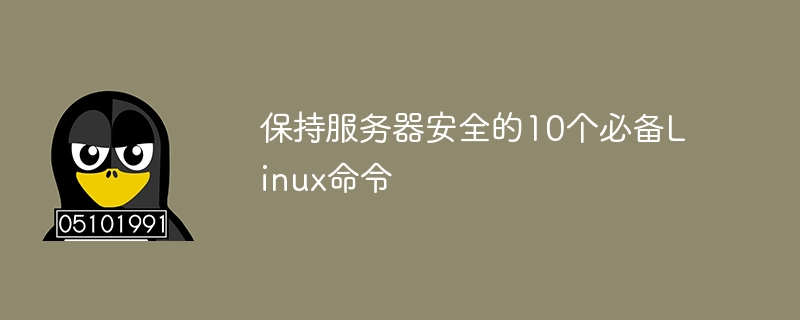

10 Essential Linux Commands to Keep Your Server Secure
As a server administrator, it is very important to ensure the security of your server. As an open source operating system, Linux has many features and tools in terms of security. This article will introduce 10 must-have Linux commands to help you keep your server secure.
In order to protect the security of the server, it is necessary to change the password regularly. You can use the passwd command to change user passwords.
$ passwd
Use the su command to switch to another user identity without logging out of the current user. This is useful for restricting user access or performing specific tasks.
$ su - username
It is very critical to protect the permissions of sensitive files and directories. The chmod command can be used to modify the permissions of a file or directory to restrict access to it.
$ chmod 600 /path/to/file $ chmod 700 /path/to/directory
The chown command can be used to modify the owner of a file or directory. Ensure that only authorized users can modify sensitive files.
$ chown owner:group /path/to/file
The iptables command is used to configure the firewall rules of the Linux system, which can restrict network access and improve the security of the server.
$ iptables -A INPUT -p tcp --dport 22 -j DROP
fail2ban is a tool used to protect servers from brute force attacks. It monitors login log files and temporarily blocks access from the IP in question when multiple failed login attempts are detected.
$ sudo apt-get install fail2ban
Log files can occupy a lot of disk space, so it is necessary to use the logrotate command to rotate logs regularly.
$ sudo logrotate /etc/logrotate.conf
Use the netstat command to view the network connection and port status on the current server. This helps detect unusual network activity.
$ netstat -tuln
Use the find command to find files on the server and perform various operations. This is useful for finding potential security issues or malicious files.
$ find /path/to/search -name "filename"
ssh is a secure remote login protocol that can establish encrypted connections. Ensure that only authorized users can log into the server via ssh.
$ ssh user@hostname
By using these Linux commands, you can enhance the security of your server and effectively protect your server from potential security threats. However, these are just some basic commands, and other security measures (such as using security software, regularly updating the system, etc.) are equally important.
Summary
This article introduces 10 essential Linux commands to help keep your server secure. From changing passwords to configuring firewall rules, these commands are important tools for protecting your server. By using these commands carefully, you can improve the security of your server and protect it from potential security threats.
The above is the detailed content of 10 Essential Linux Commands to Keep Your Server Secure. For more information, please follow other related articles on the PHP Chinese website!




